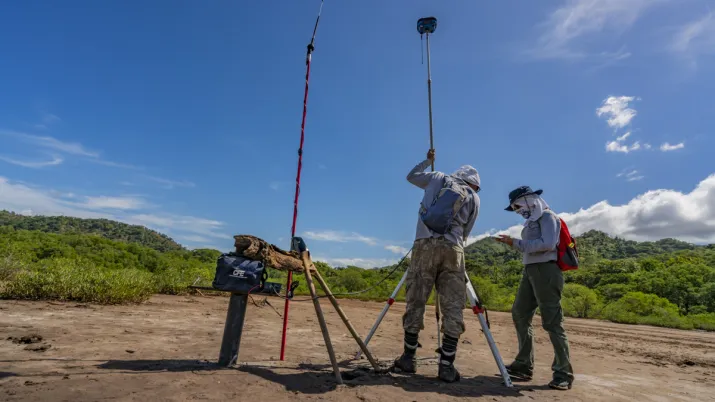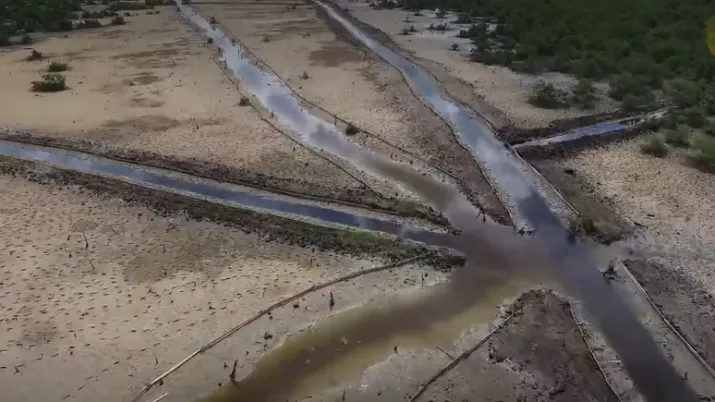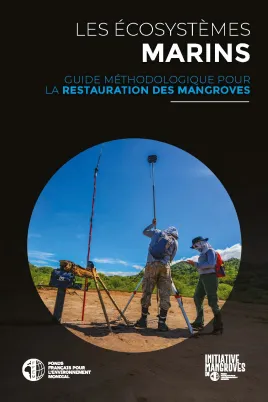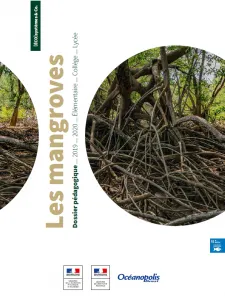Share the page
Mangroves Initiative - Philippines
Project
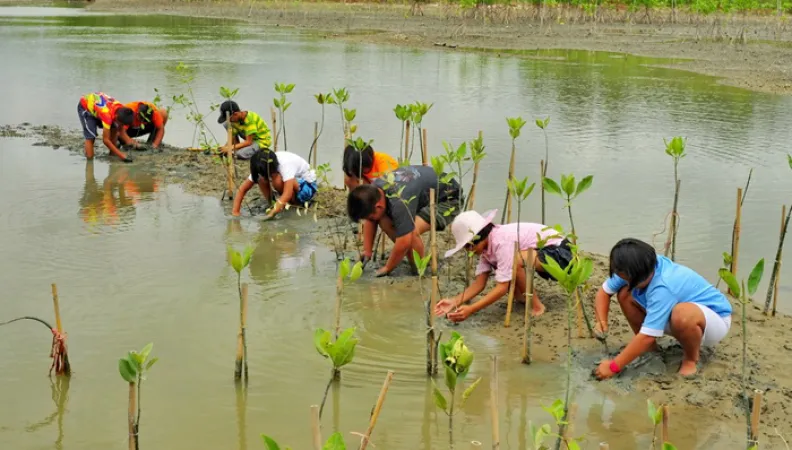

-
Project start date
-
-
Estimated date of project termination
-
-
Project financing date
-
-
Financing duration
-
8 years
-
Type of program
-
FFEM
-
Global financing amount
-
€ 4 564 000
-
FFEM financing amount
-
€ 1 510 000
-
Location
-
Philippines
-
Type of financing
-
Partners
-
Taisei, LGU, DRR-CCA fund, PDRF, DENR/ERDB, DENR/BMB, CIGEF-MKBA, CI-BWISER, CI Turing, IKI-BMUB, MoE Netherlands
-
Beneficiaries
-
Conservation International (CI)


Building coastal resilience for disaster risk reduction and climate change adaptation in small island territories by integrating green and grey infrastructure
Demonstrate the potential of linking grey (conventional engineering) and green (ecosystem conservation) infrastructures to build resilience in coastal territories and small island communities in the Philippines.
Context
On the strength of its experience in implementing coastal biodiversity conservation projects, Conservation International (CI) has decided to work with its partners in the Philippines to implement pilot demonstration sites, and to promote at national level, adaptation solutions based on both "green" and "gray" infrastructure to strengthen the resilience of coastal communities on the islands of the Philippines. These demonstration projects are being implemented at several sites in the Municipality of Concepción (province of Iloilo). This municipality was severely weakened by the impact of Haiyan, and its population is very aware of the need to protect the environment. Several mangrove rehabilitation projects have been implemented in Concepción, and the natural conditions of the municipal coastline are favorable to the development of green/gray infrastructures. The municipality of Concepción is very dynamic and enjoys strong community support, which ensures the success of this type of project.
Objective
Demonstrate the potential of natural systems to promote adaptation to the consequences of climate change, and the relevance of linking grey (conventional engineering) and green (ecosystem conservation) infrastructures to build the resilience of coastal territories and communities, particularly following the passage of typhoons. To this end, it provides a demonstration, on several pilot sites, of the implementation of "green-gray" adaptation solutions, based on ecosystem-based ("green") approaches complemented by conventional "gray" infrastructures, and promotes the integration of this type of solution into coastal protection policies at regional, national and international levels.
Impacts
- Directly contribute to the socio-economic development of local communities in the Philippines by strengthening their resilience to the impacts of climate change (such as damage caused by floods and storms) as well as their exposure to the impacts of extreme events like typhoons.
- Conserve and restore globally significant coastal ecosystems, which are a major component of the project.
- Serve as one of the very first examples, in a developing country, of combining so-called “green” approaches (such as ecosystem conservation and restoration) with conventional engineering approaches, known as “grey” solutions.
Project description
The project is divided into four components:
• Define and implement demonstration projects of green-grey infrastructures at several coastal sites in the municipality of Concepción.
• Implement a programme for the development of alternative and sustainable livelihoods for communities around the demonstration projects to ensure the long-term viability of the project, the communities, and biodiversity.
• Support the development of institutional and policy mechanisms that promote and sustain ecosystem-based and green-grey infrastructure approaches at local, national, and global levels, through capacity building and direct support for the design of management plans and policy implementation.
• Project management, coordination, monitoring, and evaluation.
Exemplary and innovative
The innovative nature of the project lies in the attempt to apply to the Philippine context the integration approaches of grey and green infrastructures, developed in the USA and the Netherlands. The project represents one of the very first examples, in a developing country, of combining so-called “green” approaches (such as ecosystem conservation and restoration) with conventional engineering approaches, known as “grey” solutions, with the aim of strengthening the resilience of coastal areas to natural disasters and promoting CCA for communities, biodiversity, and vulnerable ecosystems.
Such approaches combining green and grey infrastructures have never been tested in developing countries, even though they seem particularly well-suited to strengthening the resilience of coastal populations, notably due to their very favourable cost-benefit ratio. Unlike communities in developed countries, the communities around the demonstration project are highly dependent on marine and coastal ecosystems.
Adapting the green-grey infrastructure concept to the Philippines therefore requires that the value of ecosystem services be taken into account in the design and implementation phases of the project.
Ressources
- ggi_practicalguide_190807.pdf PDF - 6.78 Mo - Français
- ggi-experience-bacjawan-norte_05182022_final.pdf PDF - 1.86 Mo - Français
- ggi-experience-bagongon_05182022_final.pdf PDF - 2.41 Mo - Français
- ggi-experience-loong_05182022_final.pdf PDF - 1.79 Mo - Français
- ggi-experience-polopina_05202022_final.pdf PDF - 2.18 Mo - Français
- ggi-experience-tambaliza_05172022_final.pdf PDF - 3.15 Mo - Français
- joint_erdb_and_bmb_technical_bulletin_updated.pdf PDF - 1.06 Mo - Français
Sustainable Development Goals
ODD13 Climate action

ODD14 Life below water

The Mangroves Initiative projects
News of the Mangroves Initiative
Mexico (Campeche): 21st International Congress on Environmental Sciences and Mangrove Restoration
Published on September 4, 2024
Methodological Guide for Mangrove Restoration – FFEM – 2024
Published on April 23, 2024
Events on mangroves
Published on February 25, 2023



